Restoring Marine Habitats and Port Decarbonization
Considering the global initiatives to become nature positive by 2030 [1] and the United Nations (UN) Sustainable Development Goals [2], the concepts of Biodiversity Net Gain (BNG) [3] and Marine Net Gain (MNG) are gaining traction [4,5]. Here we explore the potential of marine restoration in contributing to MNG, carbon sequestration, and port decarbonisation, addressing the critical need for effective marine restoration strategies in the face of climate change, marine pollution, and overfishing [6,7,8]. We find that the positive impacts of restoration and reviving marine habitats are wide-ranging, from enhancing biodiversity and supporting sustainable fisheries [9], improving water quality [10], to contributing to carbon offsetting efforts [11]. All helping to combat climate change, mitigate its effects on our planet, and secure a more sustainable future.
The Importance of Marine Restoration
The Ocean, covering 71% of the Earth's surface, is home to approximately 80% of all life on Earth [12]. Healthy marine ecosystems generate 50% of the oxygen that we breathe and absorb 25% of all CO2 emissions [13]. The Ocean and its marine habitats also play a crucial role in regulation the Earth's climate by absorbing up to 90% of the additional heat generated from anthropogenic CO2 emissions [13]. Accordingly, marine restoration holds immense importance in safeguarding the health and vitality of our oceans [9]. As human activities continue to take a toll on marine ecosystems [14,15], restoration efforts offer a glimmer of hope. A wide range of methods and techniques are employed in marine restoration projects, depending on the specific ecosystem and the restoration goals (see Figure 1). By restoring damaged habitats, such as coral reefs, seagrass beds, and mangrove forests, we can create resilient ecosystems that can withstand the impacts of climate change and support a diverse array of marine life [16].
On top of being crucial for marine biodiversity, these restoration efforts can provide shoreline protection [17], carbon sequestration [11,18], and the provision of food and livelihoods for coastal communities. Several marine restoration projects have achieved remarkable success in recent years, showcasing the potential for positive outcomes and significant carbon sequestration potential [19,20,21]. In the United States, oyster reef restoration in Chesapeake Bay has improved water quality and biodiversity [22]. These projects highlight the benefits of dedicated restoration efforts, which can act as catalysts for positive change and provide valuable insights for future projects. Through restoring and protecting marine ecosystems, as well as engaging with local communities and stakeholders in marine restoration projects, we can raise awareness about the importance of ocean conservation and foster a sense of stewardship, all ensuring the long-term sustainability of these services, benefitting both the environment and human societies.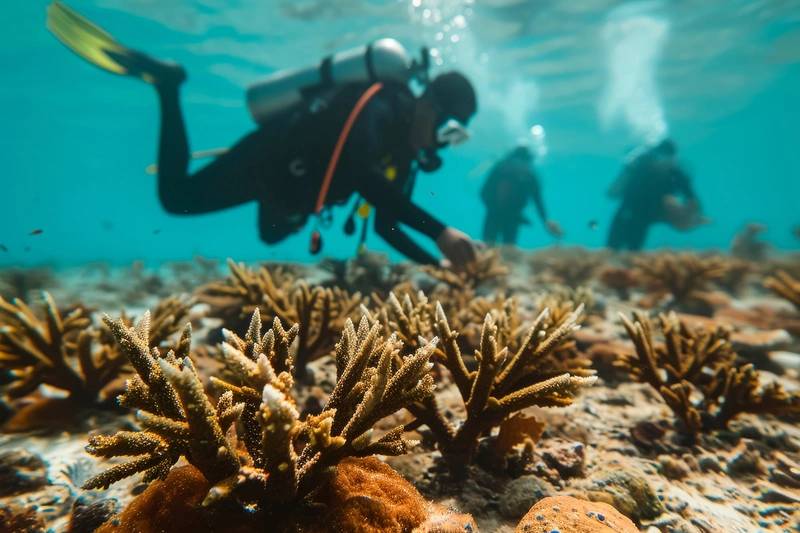 CORAL RESTORATION: Copyright Marc Elias/AdobeStock
CORAL RESTORATION: Copyright Marc Elias/AdobeStock
Potential Benefits of Marine Restoration for MNG and Carbon Offsetting
The Science Based Targets for Nature (SBTN) states that “There is no net zero without meaningful action on Nature” [23]. Marine restoration efforts offer significant opportunities for integrating Marine Net Gain (MNG) and carbon offsetting to effectively address climate change. MNG, a relatively new concept being discussed in the UK [24], aims to enhance marine habitats through development projects [4,5], moving beyond traditional methods of merely minimizing harm to the environment. Under the MNG approach, similarly to biodiversity net gain (BNG), developers would be required to deliver measurable improvements to marine habitats to compensate for any loss to marine habitats that may occur due to their projects. This can be achieved through the restoration or creation of new habitats, as well as the implementation of measures to reduce impact and protect vulnerable species. By prioritizing MNG, marine development projects can contribute to the conservation and restoration of marine ecosystems, even in areas where habitat loss is unavoidable.
This approach not only benefits the environment but also ensures the long-term sustainability of development activities by integrating environmental considerations into their planning and implementation. Simultaneously, marine restoration and MNG efforts represent a significant opportunity for carbon offsetting. This being an approach which allows individuals, organizations, or governments to compensate for their carbon emissions by investing in projects that reduce or remove greenhouse gases from the atmosphere. While mostly associated with land-based activities, such as reforestation and land-based renewable energy projects, marine habitats play a major role in carbon sequestration [11,16]. Healthy marine ecosystems have the capacity to sequester and store vast amounts of carbon. As such, there has been an exponential increase in marine restoration efforts [9] and marine renewable energy projects [25,26,27], both playing a critical role in carbon offsetting. Marine restoration projects can also indirectly contribute to carbon offsetting by reducing the need for destructive practices that release large amounts of carbon, such as bottom trawling or dredging [28]. By restoring and protecting these marine ecosystems, we can enhance their biodiversity and carbon storage potential. Thus, contribute to global efforts to help mitigate the biodiversity loss crisis [29,30] and carbon emissions, both promoting a more sustainable future.
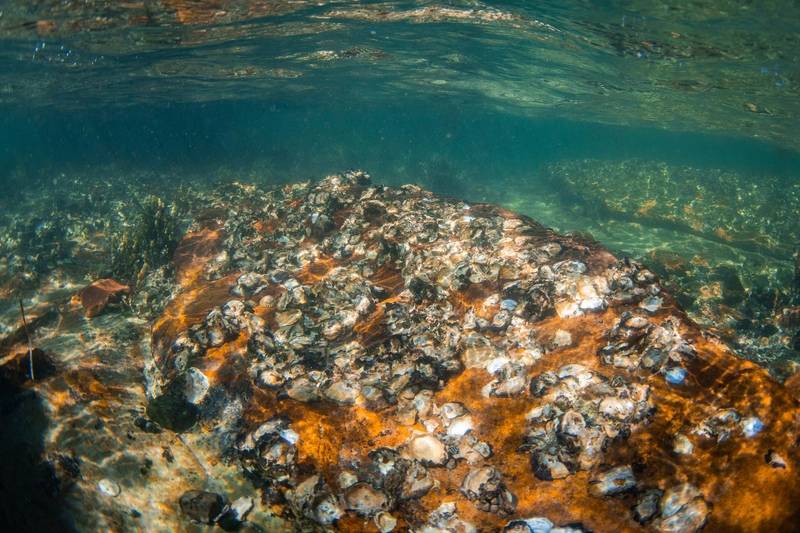 OYSTER RESTORATION.
OYSTER RESTORATION.
Copyright AlexandraDaryl/AdobeStock
Exploring the Possibilities within Ports
Anthropogenic activities such as fishing and shipping have significantly impacted marine habitats around ports [31,32,33]. Direct engagement with these industries offers an opportunity to alleviate environmental pressures and adopt sustainable practices, yielding extensive environmental benefits. As such, we explore the feasibility of restoring and reviving marine habitats within port locations as these subsea habitats hold significant potential for both biodiversity conservation and carbon offsetting. Targeted restoration efforts should be considered due to the typical impact of fishing and shipping activities on marine ecosystems, including habitat degradation and pollution. By revitalizing subsea habitats, such as seagrass meadows (or coral reefs depending on location), we can create essential corridors that support a rich tapestry of marine life. The restored habitats act as natural buffers, enhancing biodiversity by providing shelter, breeding grounds, and feeding areas for a myriad of species (Figure 2).
The revitalized ecosystems can also contribute to carbon offsetting, with the potential to sequester substantial amounts of carbon dioxide. It is crucial to integrate a variety of species suited to the specified habitat to maximize biodiversity gains, ecosystem resilience, and carbon offsetting potential. Habitat restoration efforts often go hand in hand with the removal of invasive species and the implementation of stricter regulations to prevent further degradation such as MNG. These measures help create a conducive environment for the success of restoration projects and ensure the long-term sustainability of restored ecosystems. By investing in marine restoration projects that incorporate the concepts of MNG and carbon offsetting at port locations, governments, businesses, and organizations can enhance their social responsibility and demonstrate their commitment to sustainable practices. As ships traverse these rehabilitated areas, they not only will navigate through healthier marine environments, but will also support the creation of marine biodiversity and carbon offsetting credits contributing to global climate goals.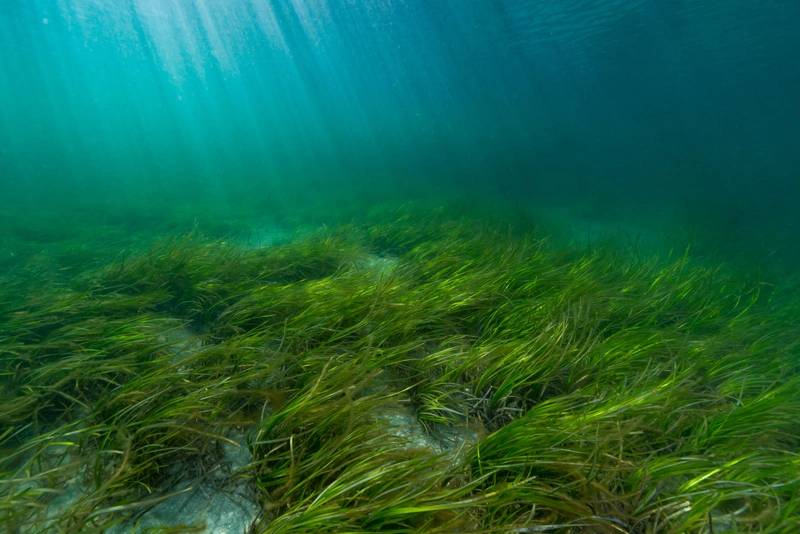 SEAGRASS RESTORATION. Copyright divedog/AdobeStock
SEAGRASS RESTORATION. Copyright divedog/AdobeStock
Challenges and Limitations
While the promotion of MNG and carbon offsetting through marine restoration projects within ports holds great promise, it does not come without its challenges. Key hurdles include ensuring long-term sustainability and securing substantial funding necessary for such projects [34]. Similarly to BNG in England [3] and the enforced long-term management plan [35], the success of marine restoration projects combining MNG and carbon offsetting, would depend on accurate measurement and long-term monitoring of the restored habitats, as well as securing funding from various sources. Success relies on collaborative efforts involving governments, organizations, and individuals. Governments play a crucial role in creating and enforcing regulations that protect marine ecosystems and incentivize restoration efforts. Additionally, they can provide financial support and facilitate partnerships between different stakeholders. Non-governmental organizations (NGOs) and research institutions also play a vital role in advancing the science and practice of marine restoration. By conducting research, raising awareness, and advocating for policy changes, these organizations contribute to the overall success of restoration initiatives. Furthermore, businesses and corporations can make a significant impact by integrating marine restoration, MNG, and carbon offsetting into their strategies. By adopting sustainable practices, investing in restoration projects, and engaging in responsible coastal development, companies can contribute to the preservation of marine ecosystems and help build a more sustainable future. MANGROVE RESTORATION. Copyright Angus/AdobeStock
MANGROVE RESTORATION. Copyright Angus/AdobeStock
Harnessing Marine Restoration for a Sustainable FutureMarine restoration holds immense potential for mitigating climate change and addressing the challenges facing our oceans. The urgent need for marine restoration is evident, given the escalating impacts of human activities on marine ecosystems. The examples of successful projects discussed in the article illuminate the tangible benefits of these endeavours, not only for biodiversity but also for climate mitigation and community livelihoods.
The potential of integrating marine habitat restoration, MNG, and carbon sequestration in port developments, presents an innovative way to promote port decarbonization as well as minimize our environmental impact and promote sustainable practices. However, the challenges of financing, long-term sustainability, and effective monitoring must be addressed through robust partnerships among governments, NGOs, businesses, and local communities. By fostering a collaborative and inclusive approach we can secure a healthier future for our oceans and our planet.
References:
- 1.Nature Positive (2024). Nature Positive – A Global Goal for Nature. Retrieved from https://www.naturepositive.org/
- 2.United Nations (2024). United Nations Sustainable Development - Goals and Targets. Retrieved from https://sdgs.un.org/goals
- 3.UK Government (2024). Biodiversity Net Gain. Retrieved from https://www.gov.uk/government/collections/biodiversity-net-gain
- 4.UK Government (2024). Consultation on the Principles of Marine Net Gain. Retrieved from https://www.gov.uk/government/consultations/consultation-on-the-principles-of-marine-net-gain/outcome/government-response
- 5.Hooper, T., Austen, M., and Lannin, A. (2021). Developing policy and practice for marine net gain. Journal of Environmental Management, 277(111387), 0301-4797.
- 6.Hoegh-Guldberg, O., Cai, R., Brewer, P., Fabry, V., Hilmi, K., Jung, S., et al. (2014). “The ocean,” in Climate Change 2014: Impacts, Adaptation, and Vulnerability. Part B: Regional Aspects. Contribution of Working Group II to the Fifth Assessment Report of the Intergovernmental Panel on Climate Change, eds C. B. Field, V. R. Barros, D. J. Dokken, K. J. Mach, M. D. Mastrandrea, T. F. Bilir et al. (New York, NY: Cambridge University Press), 1655–1731
- 7.Gattuso, J. P., Magnan, A. K., Bopp, L., Cheung, W. W., Duarte, C. M., Hinkel, J., ... & Rau, G. H. (2018). Ocean solutions to address climate change and its effects on marine ecosystems. Frontiers in Marine Science, 5, 410554.
- 8.Sumaila, U., & Tai, T. (2020). End Overfishing and Increase the Resilience of the Ocean to Climate Change.
- 9.Danovaro, R., Aronson, J., Cimino, R., Gambi, C., Snelgrove, P., & Dover, C. (2021). Marine ecosystem restoration in a changing ocean. Restoration Ecology, 29.
- 10.Valdez, S., Zhang, Y., Heide, T., Vanderklift, M., Tarquinio, F., Orth, R., & Silliman, B. (2020). Positive Ecological Interactions and the Success of Seagrass Restoration, Frontiers in Marine Science, 7.
- 11.Williams, C., Rees, S., Sheehan, E., Ashley, M., & Davies, W. (2022). Rewilding the Sea? A Rapid, Low Cost Model for Valuing the Ecosystem Service Benefits of Kelp Forest Recovery Based on Existing Valuations and Benefit Transfers. Frontiers in Ecology and Evolution, 10.
- 12.Groombridge, B., & Jenkins, M. (2002). World atlas of biodiversity: earth's living resources in the 21st century. Univ of California Press.
- 13.https://news.un.org/pages/lungs-of-our-planet/
- 14.Halpern, B., Walbridge, S., Selkoe, K., Kappel, C., Micheli, F., D'Agrosa, C., Bruno, J., Casey, K., Ebert, C., Fox, H., Fujita, R., Heinemann, D., Lenihan, H., Madin, E., Perry, M., Selig, E., Spalding, M., Steneck, R., & Watson, R. (2008). A Global Map of Human Impact on Marine Ecosystems. Science, 319, 948 - 952.
- 15.Gaspar, M., Carvalho, S., Cúrdia, J., Santos, M., & Vasconcelos, P. (2011). 10.08 – Restoring Coastal Ecosystems from Fisheries and Aquaculture Impacts. Treatise on Estuarine and Coastal Science, 10, 165-187.
- 16.Williams, S., Ambo-Rappe, R., Sur, C., Abbott, J., & Limbong, S. (2017). Species richness accelerates marine ecosystem restoration in the Coral Triangle. Proceedings of the National Academy of Sciences, 114, 11986 - 11991.
- 17.Guannel, G., Arkema, K., Ruggiero, P., & Verutes, G. (2016). The Power of Three: Coral Reefs, Seagrasses and Mangroves Protect Coastal Regions and Increase Their Resilience. PLoS ONE, 11.
- 18.Mcleod, E., Chmura, G. L., Bouillon, S., Salm, R., Björk, M., Duarte, C. M., ... & Silliman, B. R. (2011). A blueprint for blue carbon: toward an improved understanding of the role of vegetated coastal habitats in sequestering CO2. Frontiers in Ecology and the Environment, 9(10), 552-560.
- 19.Chan, W., Peplow, L., & Oppen, M. (2019). Interspecific gamete compatibility and hybrid larval fitness in reef-building corals: Implications for coral reef restoration. Scientific Reports, 9.
- 20.Schulte, D., Burke, R., & Lipcius, R. (2009). Unprecedented Restoration of a Native Oyster Metapopulation. Science, 325, 1124 - 1128.
- 21.Da Ros, Z., Corinaldesi, C., Dell'Anno, A., Gambi, C., Torsani, F., & Danovaro, R. (2021). Restoration of Cymodocea nodosa seagrass meadows: Efficiency and ecological implications. Restoration Ecology, 29, e13313.
- 22.Orth, R., Lefcheck, J., McGlathery, K., Aoki, L., Luckenbach, M., Moore, K., Oreska, M., Snyder, R., Wilcox, D., & Lusk, B. (2020). Restoration of seagrass habitat leads to rapid recovery of coastal ecosystem services. Science Advances, 6.
- 23.https://sciencebasedtargetsnetwork.org/how-it-works/the-first-science-based-targets-for-nature/
- 24.https://naturalengland.blog.gov.uk/2023/12/11/government-takes-a-step-forward-for-marine-nature-recovery/
- 25.Greaves, D., Attrill, M., Chadwick, A., Conley, D., Eccleston, A., Hosegood, P., Pan, S., Reeve, D., Williams, J., Wolfram, J., Xu, J., Zou, Q., Smith, G., Godley, B., Hor, C., Johanning, L., Millar, D., Zobaa, A., Belmont, M., & Harrington, N. (2009). Marine renewable energy development – research, design, install. Maritime Engineering, 162, 187-196.
- 26.Lamy, J., & Azevedo, I. (2018). Do tidal stream energy projects offer more value than offshore wind farms? A case study in the United Kingdom. Energy Policy, 113, 28-40.
- 27.Slorach, P., Crossland, I., Silva, A., & Money, N. (2023). Renewables for Subsea Power – Transformational Low Carbon Subsea Power Project.
- 28.Epstein G, Roberts CM (2022) Identifying priority areas to manage mobile bottom fishing on seabed carbon in the UK. PLOS Clim 1(9): e0000059
- 29.Koh, L. P., Dunn, R. R., Sodhi, N. S., Colwell, R. K., Proctor, H. C., & Smith, V. S. (2004). Species coextinctions and the biodiversity crisis. Science, 305(5690), 1632-1634.
- 30.Sandor, M. E., Elphick, C. S., & Tingley, M. W. (2022). Extinction of biotic interactions due to habitat loss could accelerate the current biodiversity crisis. Ecological Applications, 32(6), e2608.
- 31.Meehan, A. J., & West, R. J. (2002). Experimental transplanting of Posidonia australis seagrass in Port Hacking, Australia, to assess the feasibility of restoration. Marine Pollution Bulletin, 44(1), 25-31.
- 32.Chou, L. M. (2006). Marine habitats in one of the world’s busiest harbours. In The environment in Asia Pacific harbours (pp. 377-391). Dordrecht: Springer Netherlands.
- 33.Johnston, E., Marzinelli, E., Wood, C., Speranza, D., & Bishop, J. (2011). Bearing the burden of boat harbours: heavy contaminant and fouling loads in a native habitat-forming alga. Marine pollution bulletin, 62 10, 2137-44.
- 34.Bayraktarov, E., Saunders, M.I., Abdullah, S., Mills, M., Beher, J., Possingham, H.P., Mumby, P.J. and Lovelock, C.E. (2016), The cost and feasibility of marine coastal restoration. Ecol Appl, 26: 1055-1074.
- 35.https://www.gov.uk/guidance/creating-a-habitat-management-and-monitoring-plan-for-biodiversity-net-gain



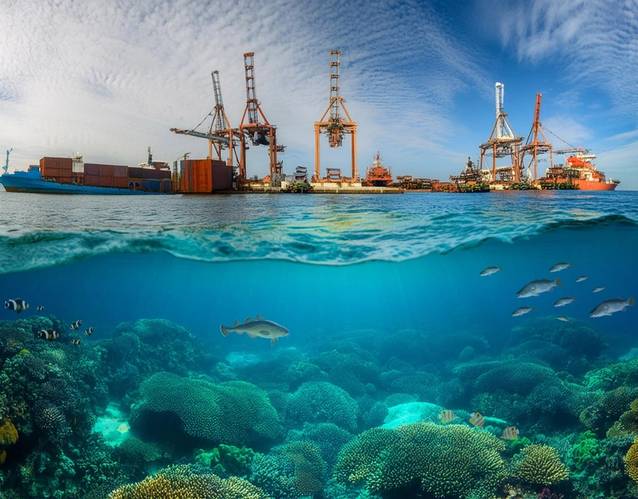


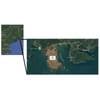
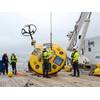

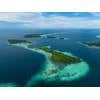








 August 2025
August 2025



